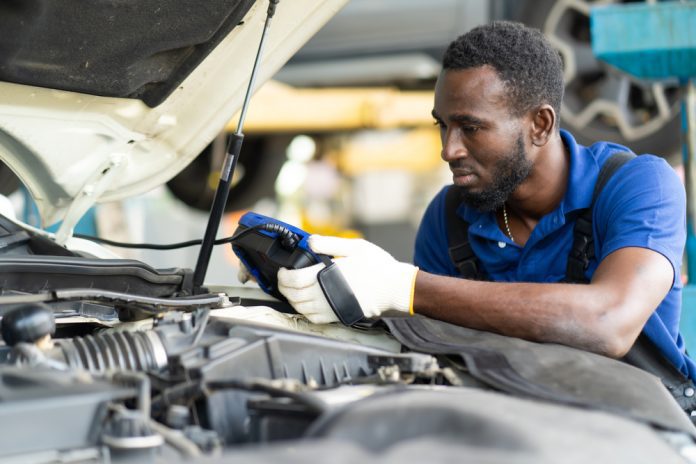Since the dawn of the car business, dealerships have been focused primarily on selling cars. Fixed ops has often been an afterthought. Ironically, fixed ops profit margins are significantly higher than margins for new and used vehicle sales.
According to Mercer Capital, fixed operations only contributed to 12.4% of sales, but was responsible for a whopping 50.5% of total dealership gross profit in 2019. By comparison, gross profit margins on new and used vehicles were 5.5% and 11.3%, respectively, compared to 46.6% gross margin on fixed ops sales.
These percentages, combined with the instabilities in the new and used car markets of recent years, are forcing dealerships to shift their strategies. With that in mind, let’s take a look at five trends that are impacting fixed ops, and how you can address them effectively in your dealership.
1. Shifting focus from sales to customer service
With the unpredictability of new and used vehicle supply, along with higher interest rates, and concerns of inflation, dealers cannot bank on sales to keep the lights on.
Instead of focusing so heavily on sales, dealers need to think of themselves as customer service businesses, and not just a sales facility.
This trend of shifting focus to customer service is a more holistic approach to vehicle ownership and the buyer’s relationship with the dealer. All too often, dealers sell a vehicle and then lose contact with the buyer for 3-5 years until they are ready to buy again.
What happens in that timeframe? The buyer owns the vehicle, drives the vehicle, services and maintains the vehicle. What if the dealer took a more active role in this ownership process? Perhaps fixed ops could increase their portion of sales from 12% to a much higher percentage.
With fixed ops profit margins 5-10x higher than the sales department, this is a smart move. It is also what the buyer is coming to expect, and it is the right thing to do for the business moving forward.
2. Embracing AI
You can’t open any news app, or watch a news program without hearing about AI these days. While AI is probably decades away from replacing the entire workforce as we know it (there is definitely no certainty it ever will), there is still a lot that AI can do to simplify things and magnify the labor force you already have.
Basic automation products like email platforms, auto-responders, and SMS reminders are great, but they create a complex patchwork of tools that are labor-intensive, and at best ineffective. This patchwork also does not integrate well, which makes a seamless customer experience impossible.
The answer is AI.
The amount of data we collect in a typical DMS is massive, often reaching tens of thousands of records. This makes large-scale database mining, and outreach almost impossible for dealership personnel whose primary responsibility should be running an effective service operation.
AI has the ability to continuously mine the database and provide routine, personalized communications with customers based on live sales data, service history, and OEM recommendations. AI can even help keep the DMS up to date by flagging outdated records.
Dealerships that have successfully deployed cutting-edge AI technology are enjoying anywhere between 10 to 25% bottom-line growth.
3. Seamless scheduling and communications
We live in a world where we can track every movement of our food deliveries, our shopping packages, and many other aspects of daily life.
Customers are accustomed to getting live updates on their devices for almost everything, and to make changes on the go.
Vehicle service need not be the exception. The days of phone calls for updates are riding off into the sunset, never to be seen again.
Customers want the convenience of scheduling their service right from their phone, 24 hours a day, seven days a week, with real-time appointment availability. During the scheduling process, customers should also be able to see all recommended services, previously declined services, pricing information, and technician notes, in order to make informed decisions about the services they approve or decline.
4. On-the-go payment options
Along with the seamless scheduling and communications discussed above, customers should have the ability to pay right on their phone or to tap their card at the service advisor’s desk.
A seamless experience should not require waiting in line at a cashier’s counter when payment options are so quick and easy. Once the service is approved, performed, and pricing is known before pickup, checkout should not be any harder than paying for your coffee.
5. EV maintenance strategies
The elephant in the room for dealership service departments is the wave of EVs hitting the market. While it is expected that EVs will change the business forever, the changes will not necessarily be all bad.
In a 2022 CBT News article, fixed ops expert David Boyle points out that “electric-powered vehicles will still need rubber tires, brakes, wiper blades, and other wear items.” So, just as dealerships pivoted in 2020 with the pandemic, they will be able to do the same with the EV shift.
Conclusion
The world of fixed ops is changing rapidly. If you don’t pay attention to the latest trends, you could find yourself lagging behind. The good news is that there are solid tools and strategies available to help dealers stay ahead of the curve.



